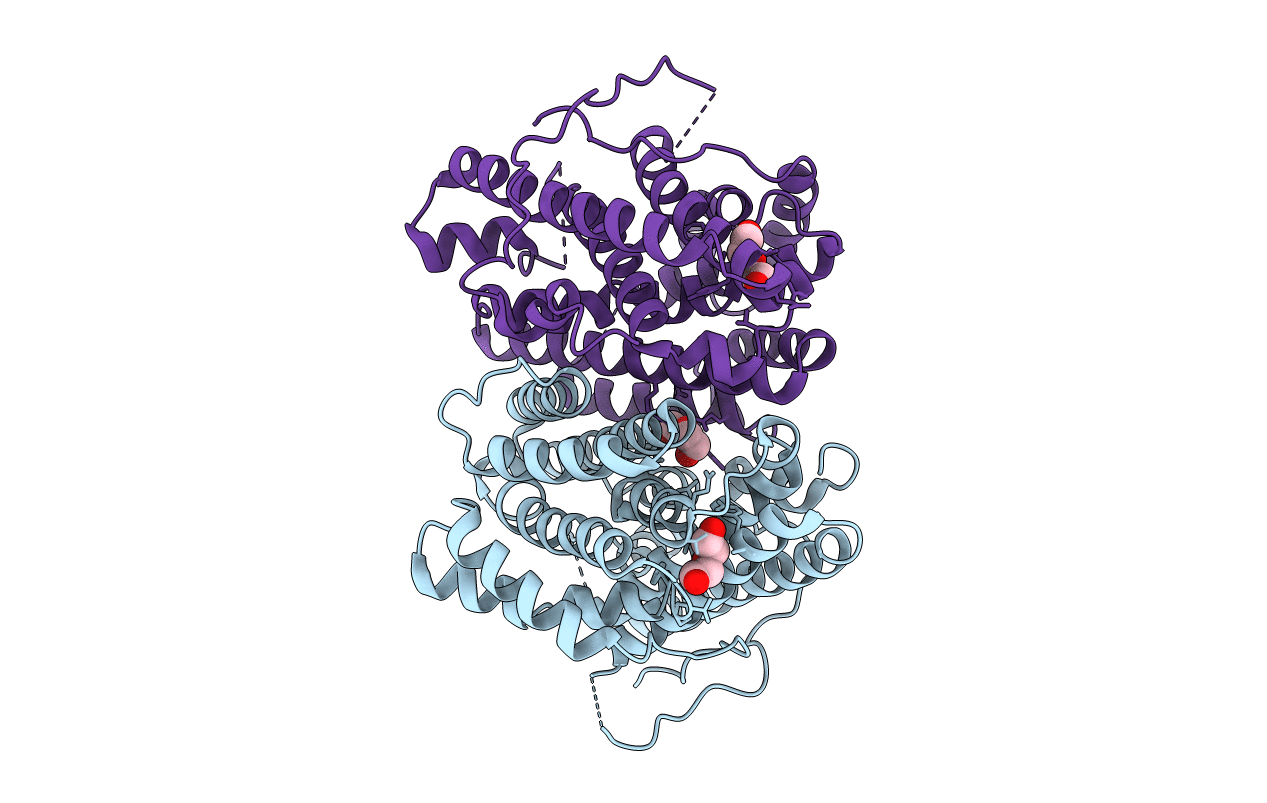
Deposition Date
2019-11-25
Release Date
2020-12-09
Last Version Date
2024-01-24
Entry Detail
PDB ID:
6TJA
Keywords:
Title:
Crystal structure of the SVS_A2 protein (W79F,G83L mutant) from ancestral sequence reconstruction at 2.27 A resolution
Biological Source:
Source Organism:
Streptomyces sp. CWA1 (Taxon ID: 1631875)
Host Organism:
Method Details:
Experimental Method:
Resolution:
2.27 Å
R-Value Free:
0.22
R-Value Work:
0.18
R-Value Observed:
0.18
Space Group:
P 21 21 21


